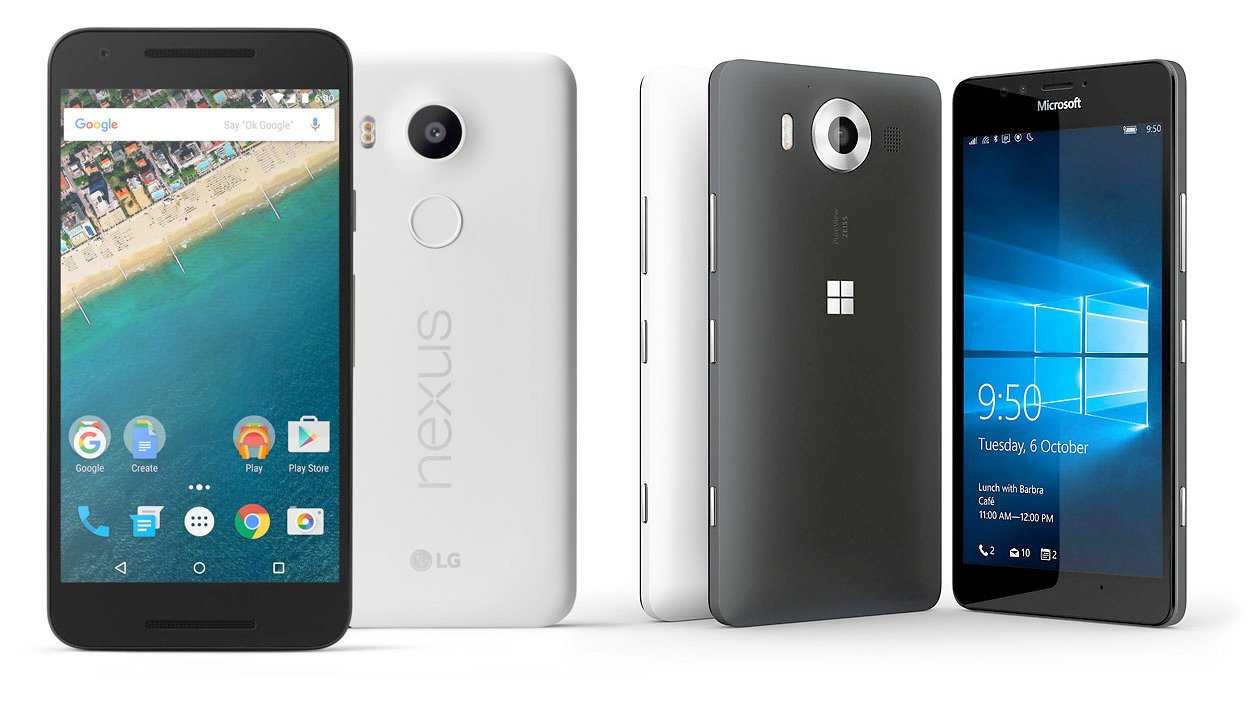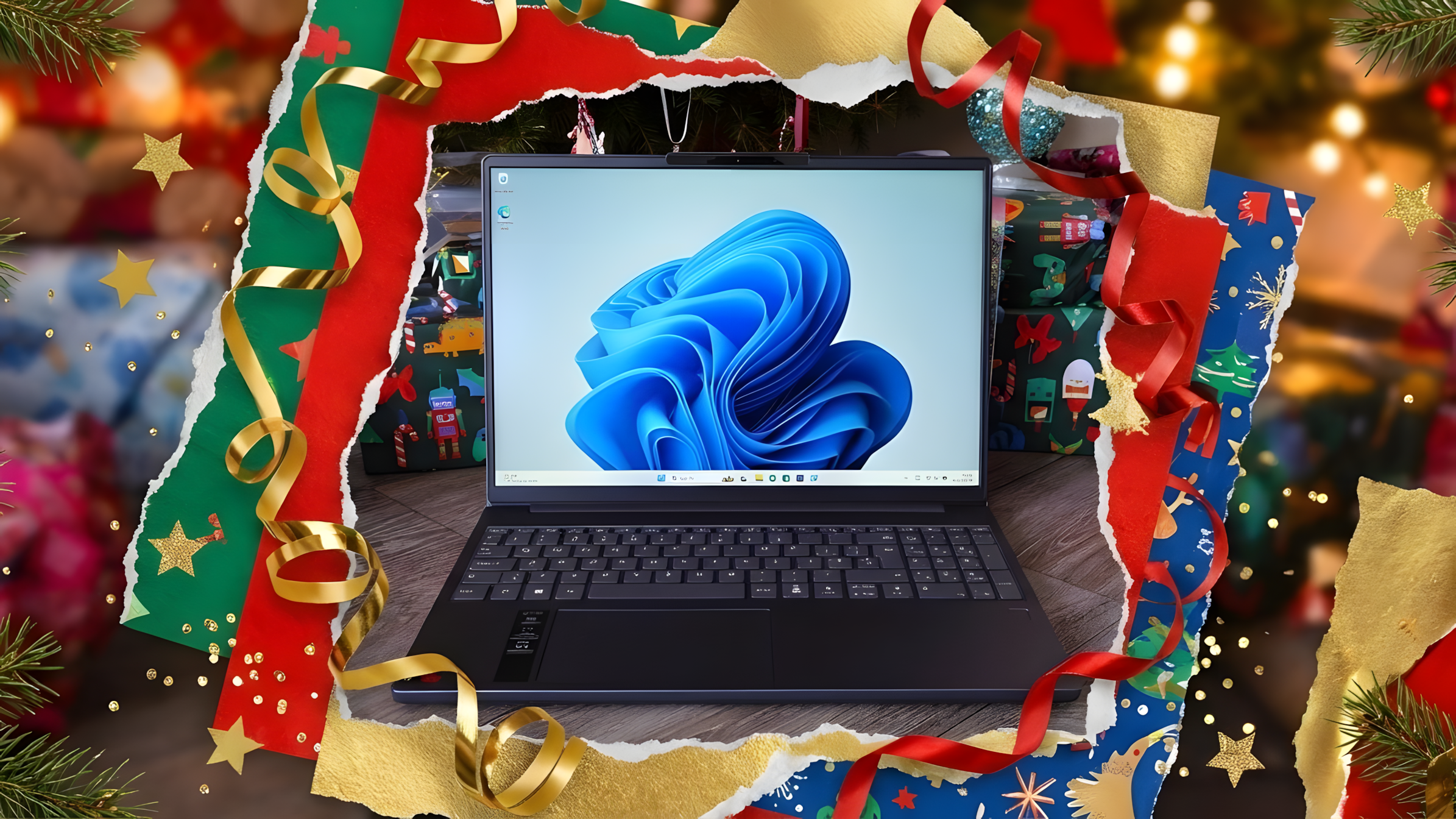Showdown: Lumia 950 versus Nexus 5X

While the Lumia 950 XL vs. Nexus 6P is a battle where the fighters have nearly identical specs, the differences between the smaller Lumia 950 and Nexus 5X are a bit more pronounced.
| Category | Lumia 950 | Nexus 5X |
|---|---|---|
| OS | Windows 10 Mobile | Android 6.0 Marshmallow |
| Screen Size | 5.2 inches | 5.2 inches |
| Screen Resolution | 1440x2560 (564ppi) | 1080x1820 (423ppi) |
| Screen Type | OLED | IPS LCD |
| Processor | Snapdragon 808 64-bit hexa-core | 1.8GHz Snapdragon 808 64-bit hexa-core |
| RAM | 3GB | 2GB |
| Internal Storage | 32GB | 16GB/32GB |
| External Storage | microSD | — |
| Security | Windows Hello iris scanner | Nexus Imprint fingerprint scanner |
| Rear Camera | 20MP ƒ/1.9 PureView camera, triple-LED flash | 12.3MP ƒ/2.0 camera, dual-LED flash |
| Front Camera | 5MP, wide-angle lens | 5MP ƒ/2.2 |
| Battery | 3000mAh removable | 2700mAh non-removable |
| Charging | Qi wireless, USB Type-C port, Quick Charge | USB Type-C port, Quick Charge |
| Height | 145mm | 147.0mm |
| Width | 73.2mm | 72.6mm |
| Thickness | 8.2mm | 7.9mm |
| Weight | — | 136g |
That's not to say that these are radically-different phones — they're just targeting different segments. Where the Nexus 6P and Lumia 950 XL are both going for big and powerful, the Lumia 950 offers a slightly scaled-back version of the bigger phone, while the Nexus 5X shoots for even more-scaled back and affordable (starting at a mere $379 unlocked).
But they're still relatively close, with the Lumia 950 eeking out a victory in battery capacity and coming to the party with a screen with more than 75% more pixels (thus requiring more RAM to keep things running smoothly). The Lumia 950 also brings what should be a technically more impressive camera to the party, but we'll have to put both phones through their paces before we can crown any victors there. The Lumia 950 will at least take larger photos, so there's that.
The Nexus 5X is an interesting phone, seemingly created to quell the cries of Nexus 5 fans who felt scorned by the positively enormous Nexus 6. And so it comes forward as an improvement on the Nexus 5 of two years prior, sporting a similar size and similar screen but improved internals, cameras, and performance.
But it runs Android 6.0 Marshmallow, while the Lumia 950 runs Windows 10 Mobile. The two are very different takes on the same concept, with Live Tiles and launcher widgets occupying the same mental space with radically-different approaches. Once inside apps the differences aren't all that stark, though Android's Google Play Store does offer a much broader selection of apps that the Windows Store can claim. It's an odd position, with Microsoft making nearly all of its flagship software products available to Android users, while none of Google's services have officially come to the mobile Windows platform.
That's not to say that Windows Mobile can't succeed without Google's apps on its platform, though it certainly wouldn't hurt. Microsoft offers a competitive product for nearly every consumer Google service, and they're all available for Windows Mobile users. Though the lack of Google support is emblematic of the problems facing Windows phones as a whole — without the right apps, customers don't buy, and without customers buying, developers aren't going to make those right apps. It's a vicious cycle.
But with phones like the Lumia 950 and Microsoft's deep pockets and even deeper bench of talent, this might just be the best shot yet for Windows in the mobile space.
All the latest news, reviews, and guides for Windows and Xbox diehards.
For the rest of our NYC #Windows10Devices coverage head here:
- Lumia 950
- Lumia 950 XL
- Surface Pro 4
- Surface Book
- Microsoft Band 2

Derek Kessler is a Former Special Projects Manager for Mobile Nations. He's been writing about tech since 2009, has far more phones than is considered humane, still carries a torch for Palm, and got a Tesla because it was the biggest gadget he could find. You can follow him on Twitter at @derekakessler.
